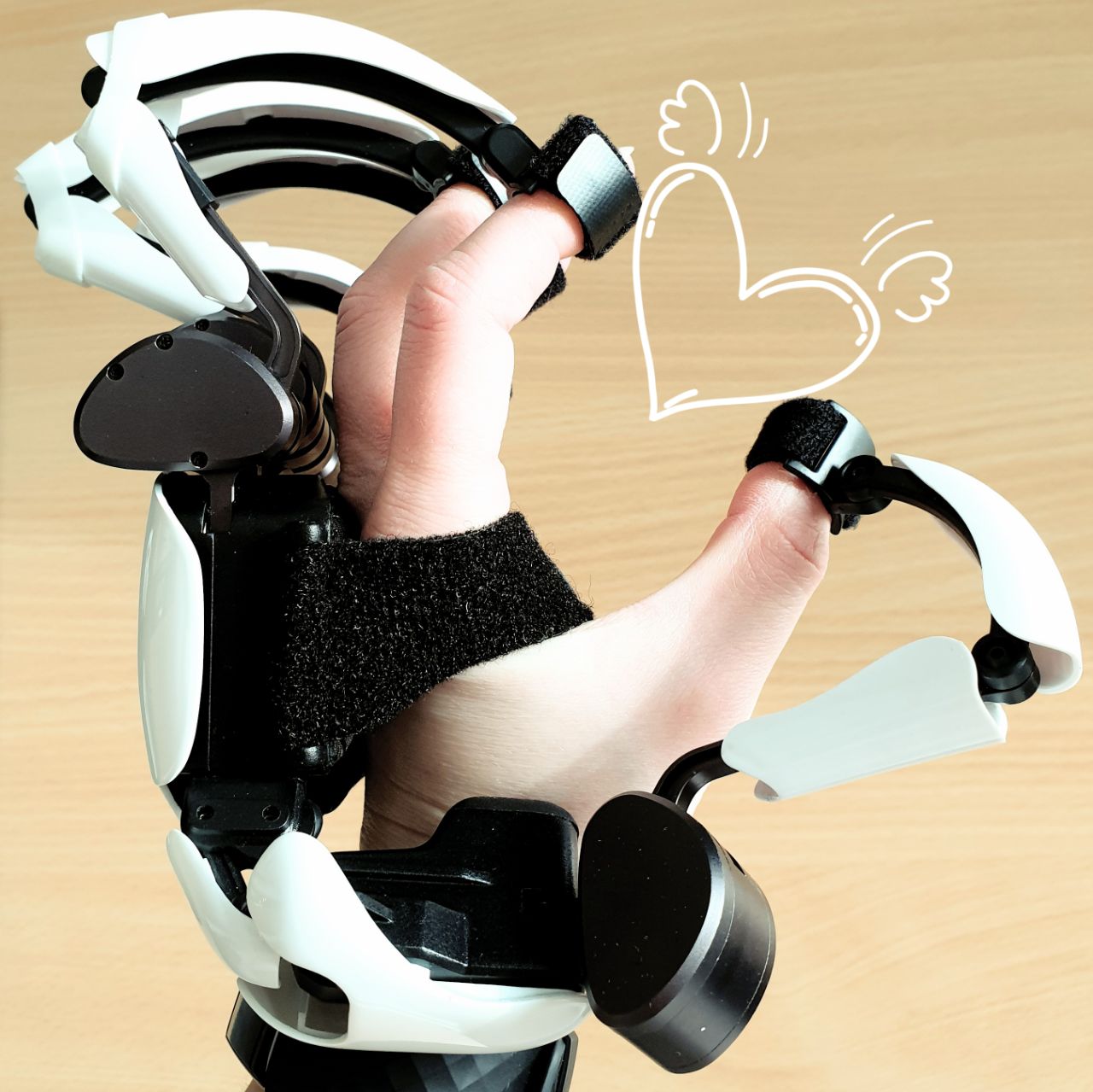





















Universität Bielefeld › Technische Fakultät › NI
Search
Haptic Performance in Virtual Reality (HaPeVR)
 We develop a 3D VR serious game to integrate valid haptic performance testing in highly adaptable and motivating virtual game scenarios. One goal is to offer stroke patients who need to improve or relearn their proprioceptive and tactile abilities an appealing and motivating tool. It allows them to monitor their progress in a more detailed manner than traditional methods, to select a suitable level of task difficulty, and potentially to improve their self-efficacy. For that purpose we combined multiple devices to a hardware framework creating a touchable virtual world. A set of scenarios is designed where players encounter different haptic discrimination or manipulation challenges in order to evaluate detailed hand and finger movements.
We develop a 3D VR serious game to integrate valid haptic performance testing in highly adaptable and motivating virtual game scenarios. One goal is to offer stroke patients who need to improve or relearn their proprioceptive and tactile abilities an appealing and motivating tool. It allows them to monitor their progress in a more detailed manner than traditional methods, to select a suitable level of task difficulty, and potentially to improve their self-efficacy. For that purpose we combined multiple devices to a hardware framework creating a touchable virtual world. A set of scenarios is designed where players encounter different haptic discrimination or manipulation challenges in order to evaluate detailed hand and finger movements.
Hardware Framework
Our lab prototype of the game device combines VR-glasses, the hand exoskeleton Dexmo, which is attached to a Phantom device, and Vicon cameras for position tracking. Whenever a human touches a VR-object, the devices deliver force feedback to produce a close impression of manipulating a real object. The haptic properties that can be simulated include a variety of 3D shape features, weights, stiffnesses, and textures.
Haptic Scenarios and Serious Game
To build upon haptic tests traditionally used during rehabilitation of stroke pations, we design some scenarios for basic manipulations abilities, e.g. gross manual dexterity or aiming. To additionally adress haptic perception, we develop scenarios for haptic perception abilities, e.g. feeling weight, stiffness or shapes. All scenarios have fine-tuned levels of complexity. To connect the small scenarios to a whole, they are embedded in a serious game in which players can seek for long-term goals to keep the motivation over a long time period. The players have to be sucessful in the haptic scenarios to sucessfully reach their long-term goals in the serious game.
Measuring Haptic Performance
To determine haptic performance we record hand- and finger movements, i.e. the trajectories, the joint angles and forces. Based on this we can calculate meaningful performance parameters, e.g. tremor, range of movement. The advantage of these parameters is that our evaluation can be compared to results of traditional haptic tests. Building on these performance parameters and whether the player can solve the tasks, we will determine the haptic performance.
Future Work
In the future, we will include adaptivity of the challenges to the patient’s individual skill level and speed of progress to further enhance the utility of the game as a rehabilitation method.



